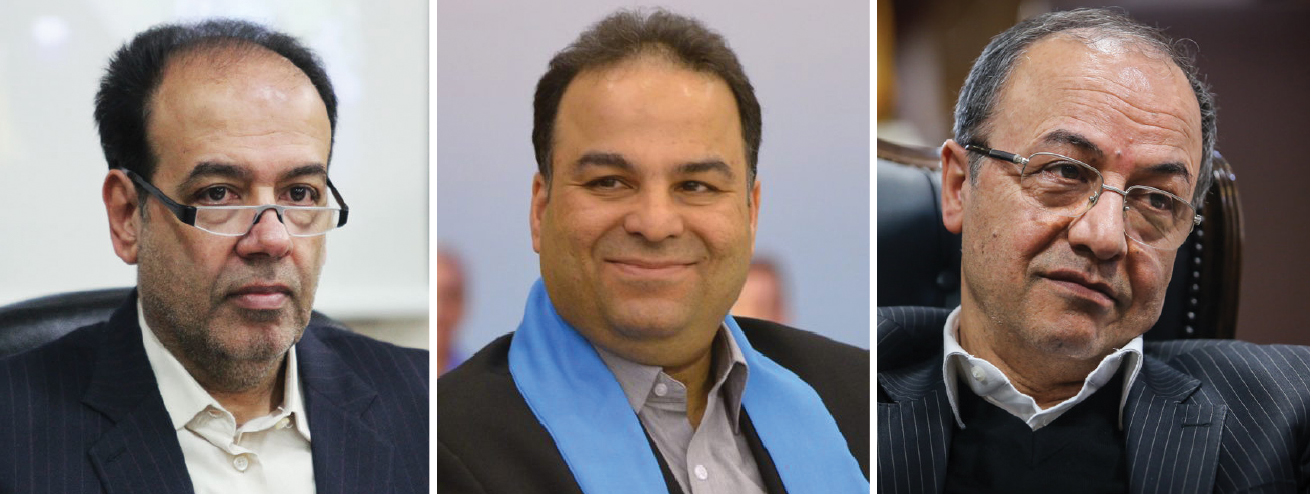The three indices of employment, economic growth and inflation must be taken into consideration for the new Iranian year (started March 21), a former president of Iran Chamber of Commerce, Industries, Mines and Agriculture said.
“The [President Hassan] Rouhani government put in an impressive performance in curbing inflation, but the main point is to maintain the fight against inflation in the new Iranian year,” Mohsen Jalalpour also told the Persian daily Iran.
The average goods and services Consumer Price Index for urban areas in the 12 months ending March 20 increased by 9% compared with last year’s corresponding period, according to the latest report released by the Central Bank of Iran.
Noting that economic development hinges on the strong presence of private sector, Jalalpour said the country needs to tap into unused economic capacities this year.
“I believe one such capacity is the private sector.”
Goals of Resistance Economy
Leader of the Islamic Revolution Ayatollah Seyyed Ali Khamenei has named the new Iranian year (started on March 21) after “Resistance Economy: Production and Employment”, as he urged government officials to direct their efforts to complete the two crucial tasks of promoting domestic production and increasing employment to achieve the goals of Resistance Economy.
Resistance Economy embodies a set of principles aimed at curbing dependence on oil export revenues, improving productivity and reducing the government’s role in the economy to make the country immune to economic wars waged by foreign powers.
It was first proposed by the Leader in 2011, amid the tightening of economic sanctions against Tehran by the US and its allies, including measures to limit Iran’s oil exports, under the pretext that Tehran intends to build nuclear weapons.
Today, Iran’s economy is out of years of war and sanctions, and on the path to growth. The economic growth of 11.9% registered for the nine months of last year (as reported by the Central Bank of Iran), along with a drop in inflation rate to single-digit figures after a quarter century, is a clear indication that sensible policies would bring about sustainable growth in future.
Production and employment are economic variables directly affected by the country’s political atmosphere. In fact, peace and stability are the main factors to attract domestic and foreign investors.
The road to increased production and employment is now paved, thanks to the lifting of nuclear sanctions and better relations with the world. As all economists believe, improved production and employment is within reach through building national consensus in an atmosphere of peace at home and abroad.
No Miracles
“The image of the future of Iran’s economy is blurry. You cannot expect miracles to happen. As we speak, 1.2 million people are looking for jobs, which is a staggering number compared to other populous countries. So there is no way but to aim for creating more jobs,” Jalalpour said.
Iran’s unemployment rate in the last fiscal year (March 2016-17) stood at 12.4%, registering a 1.4% rise compared with that of last year, according to the Statistical Center of Iran’s latest report.
The new data show 3.2 million Iranians were unemployed last year. It also shows 10.5% of men (or 2.19 million) and 20.7% of women (or 1.01 million) of ages 10 and above were jobless during the period.
According to SCI, the unemployment rate was 13.7% for urban areas and 8.9% for rural areas, and higher among women compared to men.
“Liberalizing economic activities, giving more leeway and encouragement to the private sector and improving the business environment would help realize the goal of boosting employment,” Jalalpour added.
Noting that economic growth in the non-oil sector would help create more jobs, Jalalpour said, “People are anticipating an opening in their businesses and lives. Therefore, the government needs to do some detailed planning to create such a situation.”
Fundamental Solution
Hamed Vahedi, a member of Tehran Chamber of Commerce, Industries, Mines and Agriculture’s board of directors, said Iran’s economy is aching for a fundamental solution to its problems in the new year.
“The Leader of Islamic Revolution reiterated a call that officials need to continue to uphold the principles of Resistance Economy and concentrate on domestic production and employment in the new year,” he said.
“Now everyone knows what the targets and objectives are and what we should do to achieve those goals. Resistance Economy is a scientific document based on the realities of Iranian economy.”
Noting that the unemployment crisis has now metamorphosed into a social crisis from an economic one, Vahedi said the 26% rate registered for youth unemployment shows that there is at least one jobless young adult in each family.
According to SCI, the youth unemployment rate, i.e. the proportion of population between the ages of 15 and 29, stood at 25.9% last year, posting a 2.6% rise compared with a year before.
Ali Fazeli, the head of Iran Chamber of Guilds, said an effective implementation of Resistance Economy requires the full participation of people in economic activities.
“The participation of people would bolster production and employment. Countries with active, widespread participation enjoy a robust economy,” he added.
SCI has put last year’s labor force participation rate—the proportion of the population of ages 10 years and above that is economically active either employed or looking for work—at 39.4% or 25.79 million people, registering a 1.2% rise compared with the previous year’s rate.
The economic participation rate for men and women was 64.1% and 14.9% respectively. The rate was 38.9% for urban areas and 41% for rural areas. Part-time employees constitute 10.3% of the country’s employed population.
Fazeli said currently 650,000 factories, 450,000 companies offering technical services, 400,000 companies active in the commercial sector and 1.2 million economic entities in the field of distribution are up and running in the country.
“These figures indicate that guilds help create economic stability,” he said.


